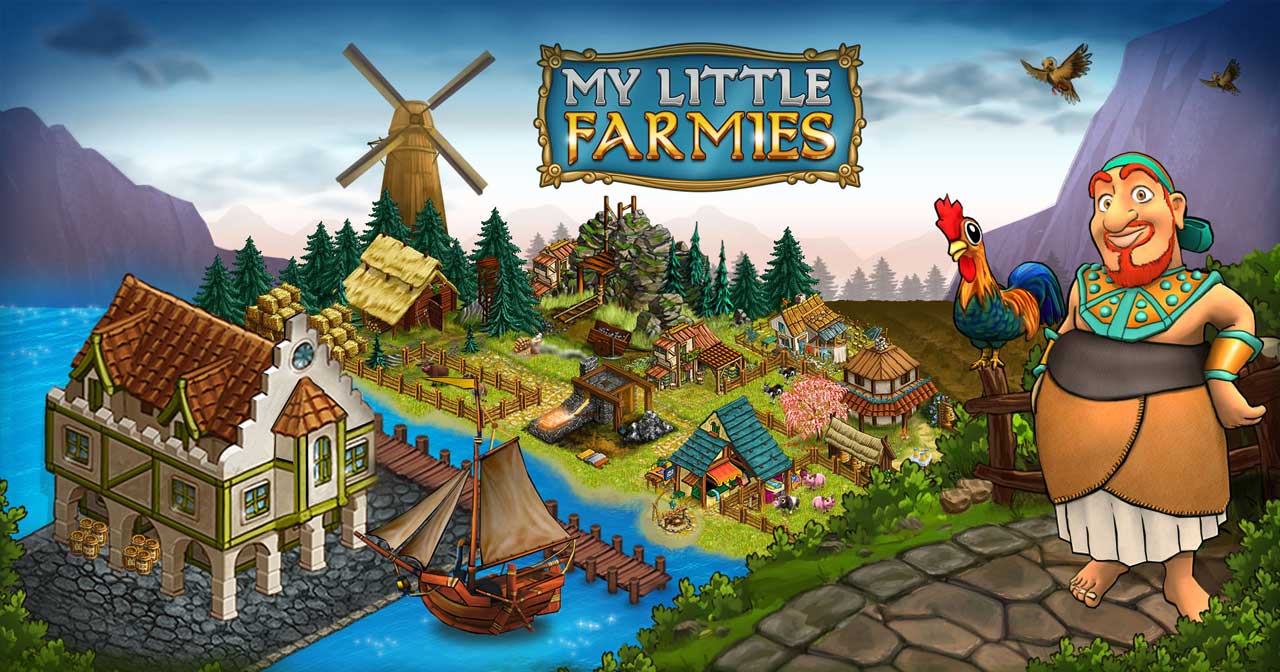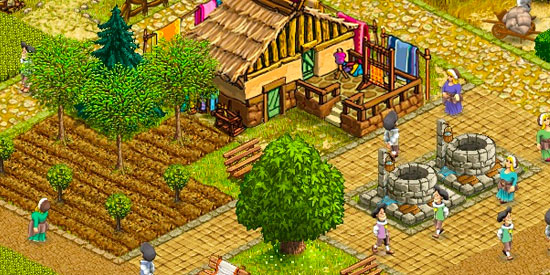
My Little Farmies
| Genre: Simulation |
| Rating: |
A whimsical blend of medieval charm and down-to-earth farming, My Little Farmies gives players a chance to build their own rustic village. But is this pixelated pastoral dream worth planting roots in?


First Impressions Matter: Getting into the Game
Booting up My Little Farmies for the first time feels a bit like stepping into a pop-up storybook. Not the glossy, mass-printed kind, but one of those well-worn treasures you'd find tucked away on a wooden shelf in your grandmother’s attic. You’re greeted by rolling green fields, stone cottages, and characters that look like they just finished their morning chores and are now happily waving you over to join in.
And join in you will—immediately.
The tutorial doesn’t waste time. Within a few clicks, you're sowing grain, building paths, and placing production buildings like a seasoned town elder. It's a no-fuss introduction that balances guidance with freedom. There’s something oddly comforting about how quickly you settle into the rhythm. Nothing feels rushed, but you’re never left wondering, “Okay... what now?”
Honestly, the opening few minutes do a fine job of setting the tone: relaxed, structured, and a little nostalgic. It doesn’t try to wow you with drama or fireworks. Instead, it leans into a gentle kind of charm—the sort that sneaks up on you.
From Humble Fields to Bustling Villages: Gameplay Breakdown
So what exactly do you do in My Little Farmies?
You grow stuff. You harvest it. You turn it into other stuff. Then, you use that stuff to build more stuff.
Okay, that might sound a bit like every farming sim ever made—but My Little Farmies puts a twist on it by layering in medieval production chains. Grain becomes flour at the mill, flour becomes bread at the bakery, and bread—well, that goes into the bellies of your happy little villagers.
It’s a farm game, yes, but it’s also a resource management sim at its core. You’re not just planting carrots for fun; you’re feeding a mini economy. There’s planning involved, and a real satisfaction in seeing everything line up just right.
And expansion? Oh, it's gradual, sure—but deliberate. You’re not just grabbing more land to slap down random buildings. You’re curating a medieval ecosystem. Every step forward feels earned. Whether you're building a new orchard or finally paving that much-needed road, there's a sense of accomplishment baked into the pace.
Let me explain it this way: imagine managing a small bakery that slowly becomes a full-blown village fair. That’s the journey this game takes you on.
The Charm Offensive: Art, Music, and Vibe
You know what? This game feels like a warm loaf of bread—honestly.
The visuals have that old-school, hand-crafted aesthetic. Characters wobble slightly as they walk, crops sway gently in the wind, and buildings nestle into the terrain like they’ve always been there. There's something delightfully retro about it all, yet it doesn’t feel outdated. More like... timeless.
The music? Soft, looped, and very much in the background—which works surprisingly well. It’s the kind of soundtrack that doesn’t distract but enhances. Like distant birdsong on a Sunday morning.
But it’s not just about looks and sound. It’s about the mood. My Little Farmies has a kind of gentle confidence. It doesn't yell to get your attention—it just hums along, quietly inviting you to stay awhile.
Not Just Another Farm Game: What Sets It Apart?
Let’s be real: the farm sim genre is crowded. You can’t swing a hoe without hitting a dozen other games promising the "ultimate farming experience."
But My Little Farmies manages to feel different—and not just because it ditches the modern tractors for wooden carts.
The medieval setting isn't just a cosmetic overlay. It informs everything: the tools, the architecture, the materials, even the tradespeople. Your carpenter doesn’t use steel nails; he uses wooden pegs. Your herbalist isn’t just a shop—she’s part of a whole tradition of natural remedies.
Customization also plays a bigger role than you might expect. You're not boxed into rigid layouts. Want to turn your farm into a sprawling, vineyard-heavy estate with cobbled paths and decorative wells? Go for it. Prefer a tight, function-first village with efficient roadwork and clear zoning? That works too. There’s plenty of room to make it your own.
And then there’s the social side. You can interact with other players’ villages, trade goods, and even form guilds. It’s not a massively multiplayer experience—but there’s just enough connection to remind you you’re part of a broader world. A kind of digital countryside co-op, if you will.
Strategy or Serenity? How It Feels to Play
Here’s where it gets interesting.
My Little Farmies walks a line between being a cozy game you can play with a cup of tea and a spreadsheet-friendly sim that rewards careful planning.
You can absolutely play it passively—check in now and then, plant some seeds, collect a few goods, rearrange a building or two. But if you want to go deeper? There’s enough system depth to keep your brain happily buzzing.
And while the pace might feel slow to players used to flashy, fast-moving games, that’s kind of the point. It’s about patience and process. About watching things grow—not just your crops, but your whole village.
There’s a sort of quiet joy in realizing your once-scattered fields now form a carefully managed network of production and trade. Every upgrade has a purpose. Every change, a ripple effect.
That might not be thrilling in the traditional sense—but it is satisfying. Like organizing a messy drawer and realizing how much smoother your morning routine just got.
Where the Weeds Grow: Minor Frustrations
Alright, it’s not all sunshine and goose feathers.
The interface—while generally intuitive—can get a little clunky, especially when your village starts to really sprawl. Zooming and scrolling could be smoother. And sometimes you find yourself clicking three or four times just to do something that should be quick.
Then there’s the repetition. Even with all the production lines and variety, you might hit a point where the loop starts to feel... familiar. Predictable. That’s not necessarily bad—it’s just worth knowing this game doesn’t reinvent itself every few hours.
And if you're someone who craves fast feedback and instant gratification? This game might not be your jam. It asks you to take your time. Sometimes a bit too much time.
But here’s the thing: those frustrations rarely break the spell. You might mutter about the menus, but then you’ll spend another hour happily planting flax and decorating roadsides with flower carts.
Is It Worth Your Time? Let’s Talk Fit
So—should you give My Little Farmies a shot?
Well, if you’re the kind of player who enjoys checking in with your game like it’s a beloved pet—feeding it, grooming it, watching it thrive—then yes. It’s a lovely fit.
It suits casual players who want a slow-paced hobby, as well as more strategic minds who like optimizing systems. It even works as a background companion while you work or relax.
And with its seasonal events, occasional updates, and evolving community, there’s enough freshness to keep things interesting long-term.
It’s not a rollercoaster. It’s more of a quiet walk through a well-loved garden.
Final Thoughts from the Village Well
There’s a word we don’t use enough when talking about games like this: cozy.
My Little Farmies is cozy in the best possible way. It’s not trying to be edgy, loud, or groundbreaking. It just wants to give you a space to build something gentle, steady, and yours.
Yes, it’s slower than most games. Yes, the visuals are a bit old-fashioned. And yes, you’ll find a few thorns among the roses.
But if your dream game smells faintly of hay and fresh bread, with a soundtrack that whispers instead of shouts—then you just might find a new home in My Little Farmies.
So roll up your sleeves, gather your seeds, and maybe—just maybe—stay a while.